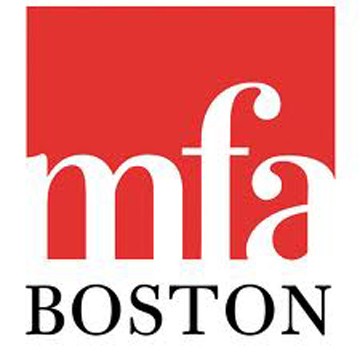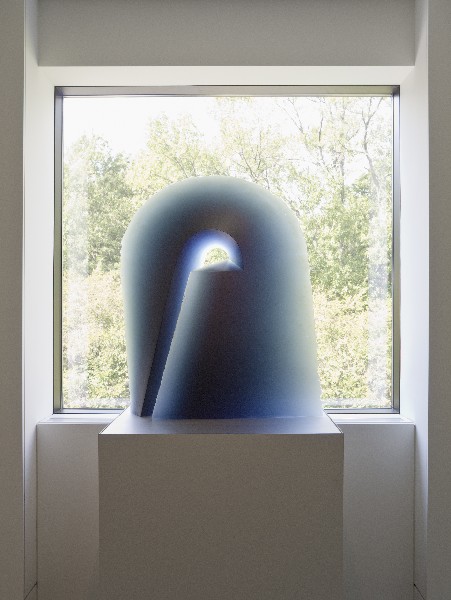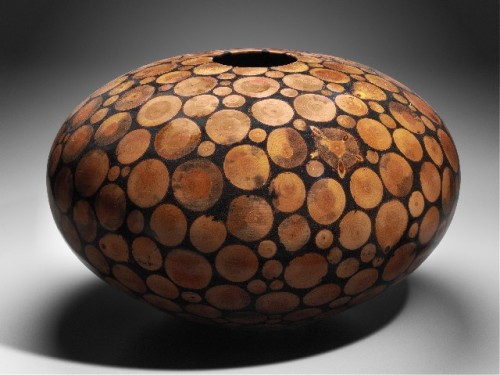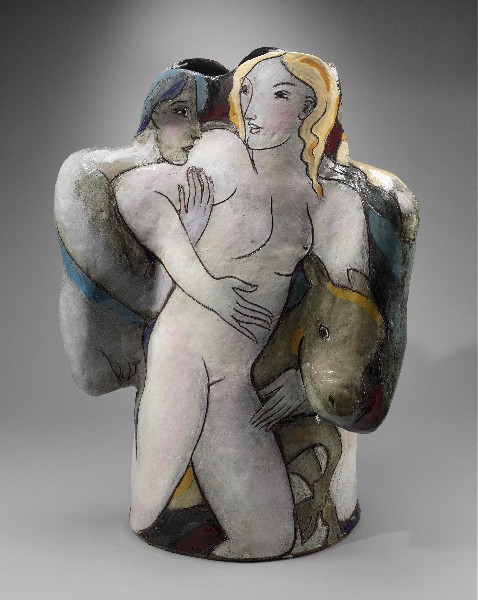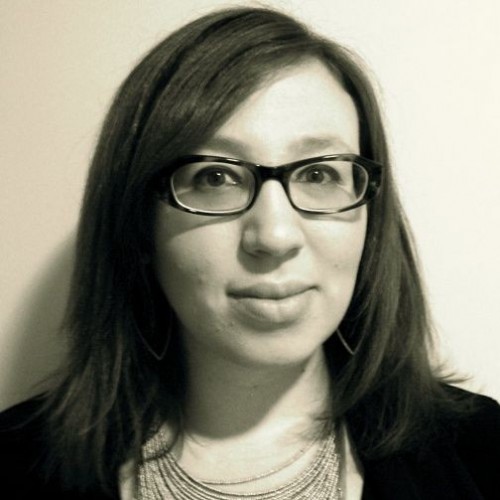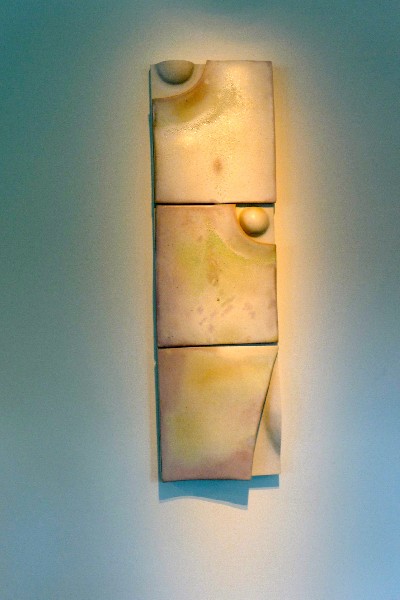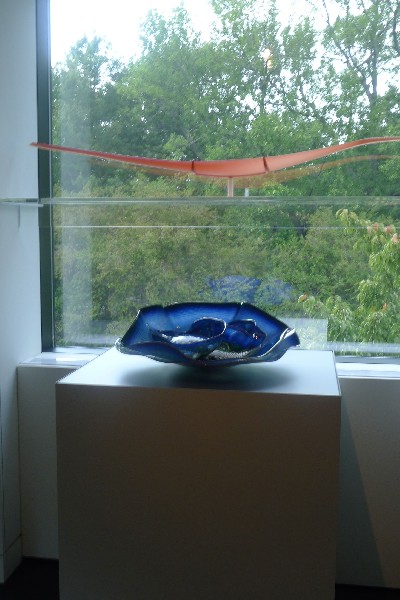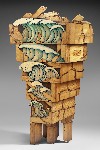Boston MFA Embraces Contemporary Decorative Arts, Craft and Design As Major Commitment
New Curator and New Dedicated Gallery Space
By: Mark Favermann - Oct 29, 2011
When the Boston Museum of Fine Arts' Linde Family Contemporary Art Wing opened this past September, not only did the vunerable art dowager on the Fens showcase its committment to Contemporary visual arts, it also a bit more quietly, but no less seriously, demonstrated its promise and potential to contemporary decorative arts, craft and design.
To give proper credit to the MFA, during his tenure Director Malcolm Rogers has consistently been supportive of decorative arts as an aspect of the MFA's programming. In fact, at the press opening , he reminded me of the conversation that we had a dozen years ago when I encouraged him and therefore the MFA to do more in the area of decorative art, craft and design.
Over the intervening years, Rogers and the MFA have done just that. During the past decade or so a wide range of decorative arts, craft and design exhibitions have taken place.
These have included Imperishable Beauty: Art Nouveau Jewelry (2008), Shy Boy, She Devil and Isis: The Art of Conceptual Craft (2007), Sara Gainer, The Saturday Evening Girls andthe Paul Revere Pottery: Selections from the Bloom Collection (2006-07), West African Gold: Akan Regalia from the Glassell Collection (2005), Contemporary Clay: Japanese Ceramics for thr New Century (2005), The Quilts of Gee's Bend (Summer 2005), Art Deco:1910-1939 (2004) and Drawn for Design: Renaissance Architectural Drawings (1999).
A stunning Greene and Greene exhibit was held in 2009, A New and Native Beauty: The Art and Craft of Greene & Greene organized by Nonie Gadsden, Carolyn and Peter Lynch Curator of Decorative Arts and Sculpture was a traveling show shared by the MFA. This past Spring and Summer, there was the extremely popular Chihuly: Through the Looking Glass curated by Art of the Americas Katharine Lane Weems Senior Curator of Decorative Arts and Sculpture Gerry Ward.
Recently to underscore the MFA's committment to decorative arts, a new curator Yvonne Markowitz was appointed to be the Rita J. Kaplan and Susan B. Kaplan Curator of Jewelry. She is part of the Department of Textiles and Fashion Arts. In addition, Meghan Melvin was appointed the Jean S. and Frederic A. Sharf Curator of Design, and Benjamin Weiss was made Leonard A. Lauder Curator of Visual Culture. Both serve in the Department of Prints, Drawings, and Photographs.
However, the most major appointment and indication of the MFA's serious committment to decorative arts has been Emily Zilber as the first Ronald L. and Anita C. Wornick Curator of Contemporary Decorative Arts. Ms. Zilber brings a strong curatorial background, great passion, encyclopedic knowledge and a discerning eye to the task.
Zilber has a BA in Art History from The University of Chicago and a Master of Arts in the History of Decorative Arts and Design at Bard Graduate Center in New York. Previosly, she worked as an intern at the Antonio Ratti Textile Center and the Department of European Sculpture and Decorative Arts at the Metropolitan Museum of Art.
She was also as Curatorial Assistant at the Museum of Arts and Design. Before coming to Boston in 2010, she was a curator at Cranbrook Academy's Museum in Bloomfield Hills, Michigan. Her earlier research was linked to the relationship of textiles to ritual, in early Modern Europe, specifically looking at narrative and modes of communication through design, iconography, pattern and ornament.
The Linde Family Contemporat Art Wing allows the presentation of the the art of our times through fresh perspectives. Included in the wing's seven galleries is one dedicated solely to Contemporary decorative arts, craft and design, The Daphne and Peter Farago Gallery. This dedicated space was donated by megacollector Daphne Farago of Little Compton, Rhode Island and Miami, FL. It serves as a permanent homage to the spirit, skill and craft of contemporary decorative arts.
In an recent interview with Emily Zilber, she graciously agreed to answer a number of my questions regarding the enhanced decorative arts program at the MFA.
Mark Favermann: As you are one of the newest members of the curatorial staff at the MFA, in regard to the addition of the Linde Family Wing, were you greatly involved in the planning and setup of the New Contemporary Decorative Arts space, the Daphne and Peter Farago Gallery?
Emily Zilber: This question has a number of parts. First, I started at the MFA in October 2010. As the Linde Family Wing was by then well underway, I immediately became involved with the other Contemporary staff members working primarily with Curator Jen Mergel. Second, the effort was highly collaborative. The work generated many curatorial voices and perspectives. As the Linde Family Wing installation was an integrated one, it was a major and hard-working team effort. We also worked with many other departments of the MFA. Third, the Farago Gallery’s first exhibit was entirely drawn from the Farago Collection, some objects are donated and others on loan to the museum.
MF: What is the depth and breadth of the MFA’s contemporary decorative arts collection?
EZ: Interesting question, as the first designated contemporary curator, my job is to assess the MFA's vast collection. Also, our department is involved with every other department in the Museum with the exception of Art of the Ancient World. So, the collection is global and quite international.
To enhance the MFA's collection, we are also in conversation with many collectors and potential donors. The Wornicks are an example of this. Major collectors Ron and Anita Wornick are from San Francisco, but they grew up in Boston. Therefore, they have strong emotional and familial ties to Boston and the MFA. The Wornicks promised 250 pieces from their collection to the Museum after the MFA's 2007 show The Art of Conceptural Craft. The exhibit was from their remarkable collection of later 20th Century and early 21st Century objects. There are many other serious collectors and collections that are potential donors as well.
MF: Do you have a budget for purchase of new works? And how much?
EZ: Yes, we do have Departmental funds and are actively involved in purchasing. We are trying to reflect what artists are doing today. Nice try, Mark, but the MFA does not tell its purchasing budget amount.
MF: How do you distinguish between decorative arts and design objects?
EZ: The one word answer is "context." Industrially designed objects can be quite beautiful and even iconic. There are many examples throughout the Art of the Americas Wing and my colleagues there have presented wonderful examples of these. We tend to flirt with contemporary designs of mass produced manufactured objects. The Proust armchair by Italian designer Alessandro Mendini displayed in the Linde Family Wing is an example of this. We are particularly interested in prototypes and limited editions for the collection.
MF: What is considered Contemporary Decorative Arts in terms of starting date?
EZ: Like the rest of the Contemporary Department, the nominal year is from 1955, but this is certainly porous. We are interested in objects and furnishings from the 60s, 70s, and 80s. Our desire is to tell stories in context across decades with a broader eye with a wide focus. Interdepartmental frequent communicating is essential. Though certainly considered decorative art, contemporary jewelry is collected by the new Department of Jewelry, not us. But we will potentially collaborate appropriately. This happened in the inaugural exhibit.
MF: How will you collect industrial designer created objects?
EZ Designer objects have not been at the forefront of the MFA's contemporary collection. The question is do you fill in the collection's gaps or collect the new. The best situation is to collect both. There is certainly room for one off visions through material culture, place, time and culture design/art movement, etc. The idea of a one off is appealing. Such notions as aesthetic zeitgeist, aesthetic language, mass produced, organic forms, earliest of a direction and even connouseurship are all part of the collecting decision-making process. We are very interested in mass market iconic pieces that are part of the larger culture similar to what Curator Nonie Gasden has put together for the Art Deco period. There is also interest in strategic pieces that are representative of the time period and connect to historical recent past. The Cindy Sherman tea set that is on display in the inaugural exhibit is a design that fits very well.
MF: How often will the gallery exhibits change?
EZ: The Farago Gallery will rotate in full in 18 months, and then have smaller rotations on an object by object basis, but rarely rotate completely. The Linde Family Wing rotation begins in January 2012.
MF: Will you be given use of the Foster Gallery? In 1997 a major glass exhibit with an uninspired nonreflective (pun intended) name, "Glass By American Studio Artists," was held there. It was curated by Jonathan Fairbanks of American Decorative Arts & Sculpture. This was a spectacular event. If so, how often?
EZ: Yes, we will. This will happen whenever we have an appropriate exhibit to present.
MF: What makes up the largest amount of your department’s collection?
EZ: The MFA has been collecting material for quite sometime. A contemporary highlights book will be coming out to showcase the collection. Glass, ceramics and studio furniture are abundant in the MFA collection.
MF: How do you see the collection growing? Changing?
EZ: There will be much more interdisciplinary works on contemporary techniques and new materials, but also we want to fill in various gaps. This well be developed looking at the recent past as well as looking internationally. Our department will be having conversations on a global landscape.
MF: Last question; as a scholar, what publications do you read and learn the most from?
EZ: I try to read and keep up as much as possible. A few particular publications that come to mind are the Journal of Modern Craft, the Journal of the V&A (Victoria & Albert Museum), Bard College's publications, American Craft, Art in America, Metropolis, Dwell, Handmade and Fast Company among others. And of course, Online publications like berkshirefinearts.com. There is definitely a need for me to look as broadly as possible.
MF: Thank you, Emily.
Like all of the other contemporary galleries, the Farago Gallery installations will invite dialogue about what is contemporary decorative art, its relationship to art as a whole and its place in art history and design history as well. The conversation will question how artists push the boundaries of what we understand decorative art and design can be as well as how is the work made and why. It will be Emily Zilber's job to help creatively and provocatively lead the conversation. The MFA has set up the platform for this visual discussion, and she is certainly very articulate.

